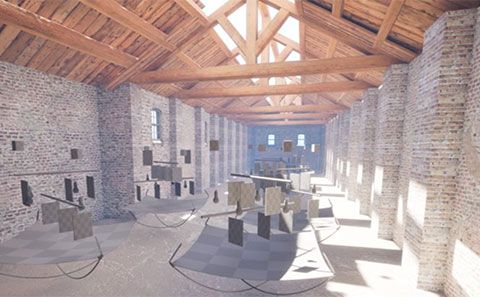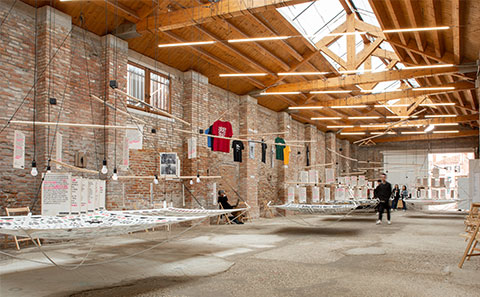University unveils VR experience which could let users explore art exhibitions across the world

Virtual reality technology with the potential to bring art exhibitions from anywhere in the world to your front room has been developed by a team from the University of Southampton.
Their aim is for any art exhibition to be incorporated into the technology, allowing users to walk around, explore and interact online.
Yuanyuan Yin, Professor of Design based at the university’s Winchester School of Art (WSA), has invented the virtual reality experience.
She said: “We wanted to use virtual reality technology to bring art exhibitions from all over the world to those who might not be able to otherwise see them.
“Money, mobility, or anxiety issues can all create boundaries and stop people from viewing these exhibitions, but the VR experience allows them to easily access and interact with them in a completely unique way.
“Anyone with a phone or computer can access the experience online, and the VR headset version will be showcased at WSA’s Design for Future exhibition.”
The technology uses 3D scanning drones and 360-degree cameras to capture imagery of an exhibition and build a virtual model.

The first exhibition to use the technology is Following the Fish, curated in part by Dr Daniel Cid Moragas, Associate Professor of Design Studies at WSA. The exhibition featured at the Architecture Biennale in Venice in November.
Allowing visitors to rethink architecture from the perspective of an African immigrant, the exhibition has seen more than 26,000 people visiting in person - becoming the Biennale’s most visited architecture exhibition ever.
Dr Moragas said: “Following the Fish encourages people to think about the lives we all live, and how we can fix the issues we have.
“It is important to promote these types of projects to make them visible for more people to see, as we cannot deal with social challenges without people having knowledge that they exist in the first place.”
Professor Yin hopes the interactive experience might encourage other artists to design their exhibitions differently.
She said: “These virtual spaces give us new ways to encourage people to interact with art. It gives future artists the chance to think about the different ways they can design their exhibits.
“Not only that, but it can also change the way we create. Virtual spaces give you real freedom and flexibility when it comes to material design and creation.
“Following the Fish is just the first exhibition we’re sharing with the world, but we can’t wait to open the virtual doors to many more.”
Explore the Following the Fish exhibition online here.
Or find more details for the Design for the Future exhibition here.